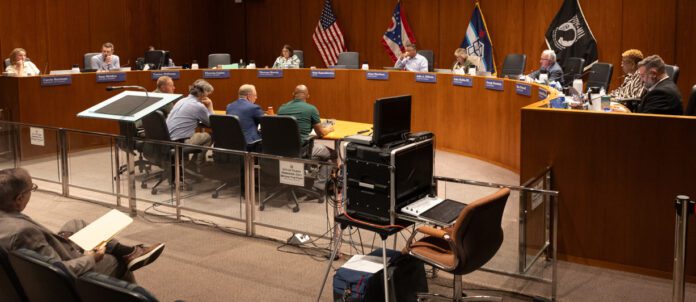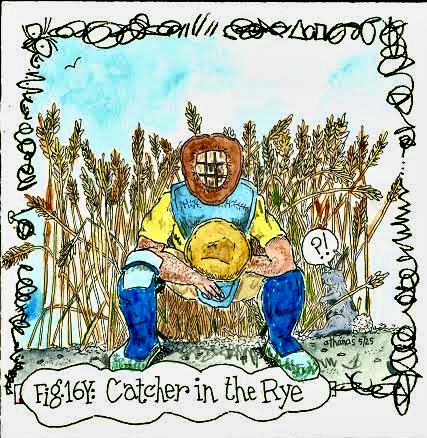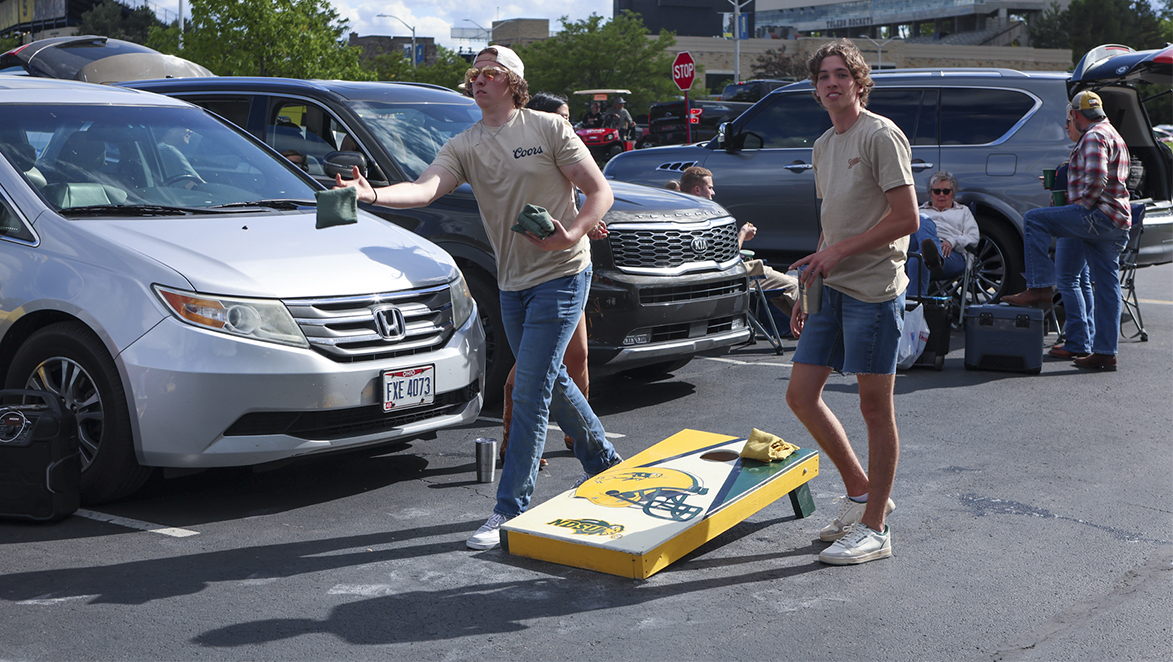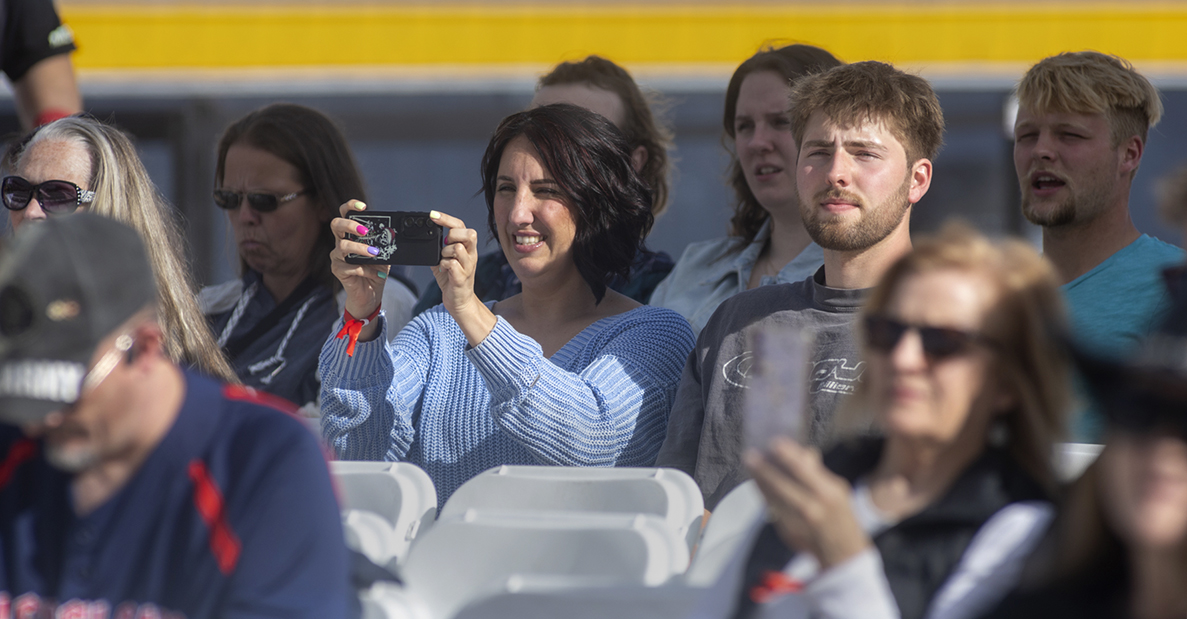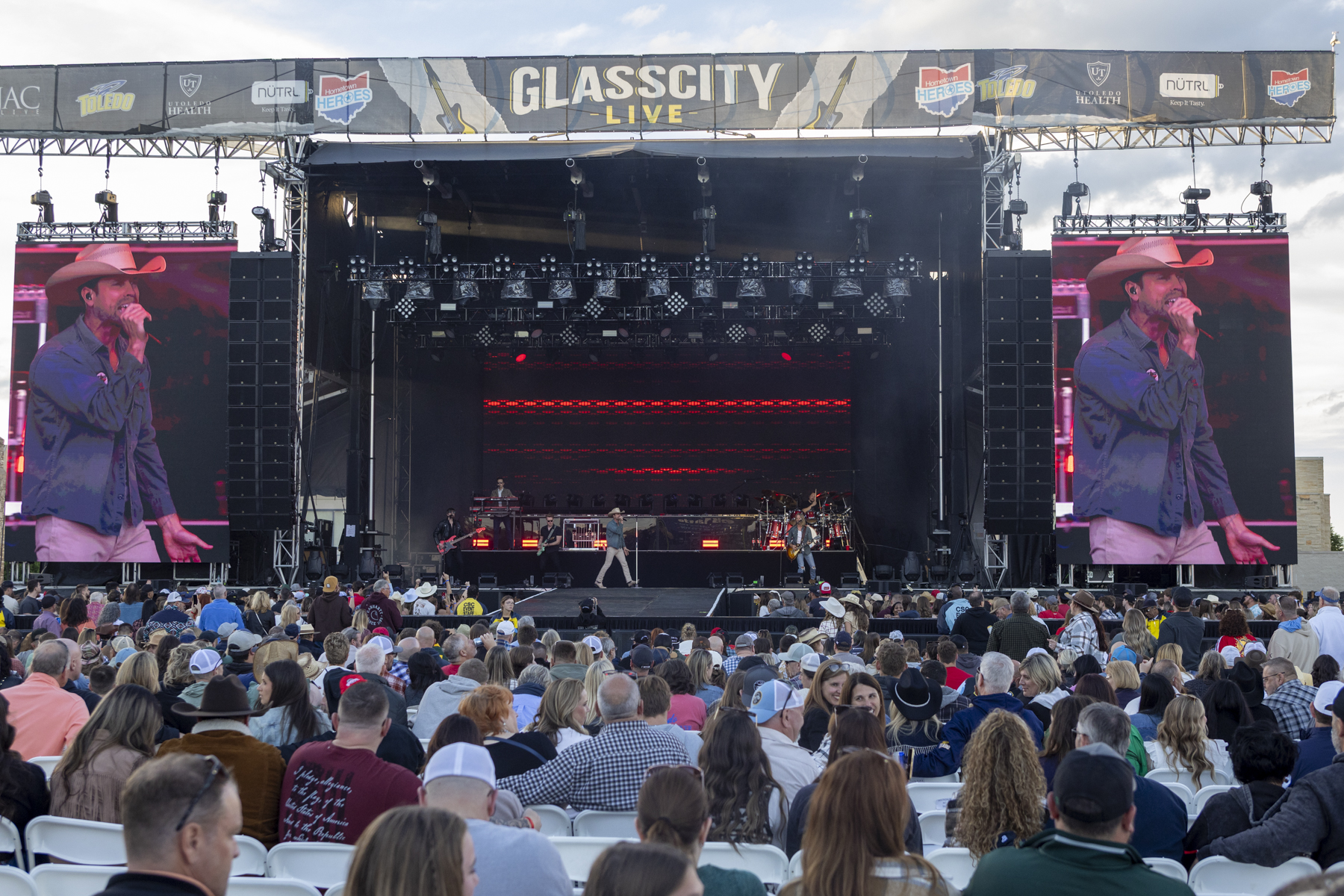Tomlinson departs UT for Tennessee

TOLEDO — Al Tomlinson, deputy athletic director at the University of Toledo, left UToledo on Friday to join the University of Tennessee as senior associate athletic director for capital projects and facility revenue.

Tomlinson said his responsibilities in Tennessee will differ significantly from his role at UToledo. He will oversee large-scale projects exceeding $500 million and serve as the primary contact for the Neyland Entertainment District, an area near Neyland Stadium featuring entertainment, retail, restaurants and condotels (condos operated as hotels).
Despite his excitement about the new role, Tomlinson said he will miss the students and welcoming community.
“When I got here, I said that our students would need to be treated as if they’re our 17th sports program,” he said, referencing UToledo’s 16 athletic programs at the time, and the importance of maintaining each. “That’s the level of emphasis we’ll place on their experience.”
During his time at UToledo, Tomlinson worked to relocate student tailgates closer to the football stadium and empowered student voices in planning investments that mattered most to them.
Bryan Blair, UToledo athletic director, said that since Tomlinson was recruited, UToledo set records in terms of sell-outs and made a big impact in Toledo.
“I’m really happy for him to make this move to Tennessee and I’m incredibly thankful for all the work he put in here,” Blair said.

Tomlinson and other collaborators also helped secure additional resources, staff positions and benefits for UToledo student-athletes, crediting donor support for making those advancements possible.
“I’m really proud, overall,” Tomlinson said.
Among his fondest memories, Tomlinson cited hosting the Barstool College Football Show on campus and celebrating major wins for UToledo’s basketball teams.
“Winning the fourth and third straight MAC Championships on the men’s and women’s basketball team, respectively, those were special moments because I think it was doing things that had never been done; to be a part of that makes you feel like these moments don’t come often and you appreciate them a little bit differently.”
Tomlinson listed a few important tips for the future deputy athletic director at the University of Toledo would be to build strong connections, particularly with the UToledo athletic director.
For Tomlinson, relationships and management will be central in Tennessee.
“There’s got to be stakeholders in the equation, local and campus officials, private investors and everybody in between,” Tomlinson says. “So managing all those relationships, communicating across those channels, and ensuring that people get what we’re trying to accomplish, that’s what I’ve done in this role, and that’s what’s gonna help me in my next role.”
Blair said there is currently an ongoing search for a new candidate to fulfill the position.
“We started a couple weeks back, hopefully coming on down the home stretch on that search for a new position.”
Black-necked stilts populate marsh

CURTIS – One of the most unusual shorebirds to observe at Howard Marsh Metropark is the black-necked stilt.
Elegantly slender, attractively black-and-white patterned, and sporting impossibly long and thin pink legs as well as a long, thin straight bill, this fascinating species has found Howard Marsh very much to its liking.
Their arrival came as a welcome surprise, especially since the stilt is a species more inclined to nest along seashores and in marshes much further south. It was particularly welcome since it found Howard to its liking virtually as soon as the former wetland-turned-farmland was restored again as a wetland just a few years ago.
The species has flourished and returns every year since. That nesting put an emphatic gold seal on Howard as a high-quality wetland certain to be even more productive and attractive as a birding hotspot in years to come.
Nesting stilts are very territorial and highly aggressive, traits illustrated in this photograph taken at a Howard sunset. In a dramatic real life example of the classic line, “It’s not the size of the dog in the fight, but the size of the fight in the dog,” a nesting pair of stilts attack a much larger and more powerful passing bald eagle, successfully hurrying it away from their nest territory.
Inside Toledo City Council: May 27
Inside Toledo City Council is an ongoing TFP series highlighting the public functions of the 12-member council, so citizens can become more civically involved.
TOLEDO – An unsolicited petition presented by Toledo mayoral candidate Roberto Torres put added a bit of heat to the Tuesday afternoon’s Toledo City Council agenda review.
Only when ordinances are still in committee can the public express their opinions on them, and ordinances are not open to public comment during review or meetings by council. So, Torres’s interruption was met with an immediate rebuff from council member Adam Martinez (District 2), who was presiding over the agenda review.
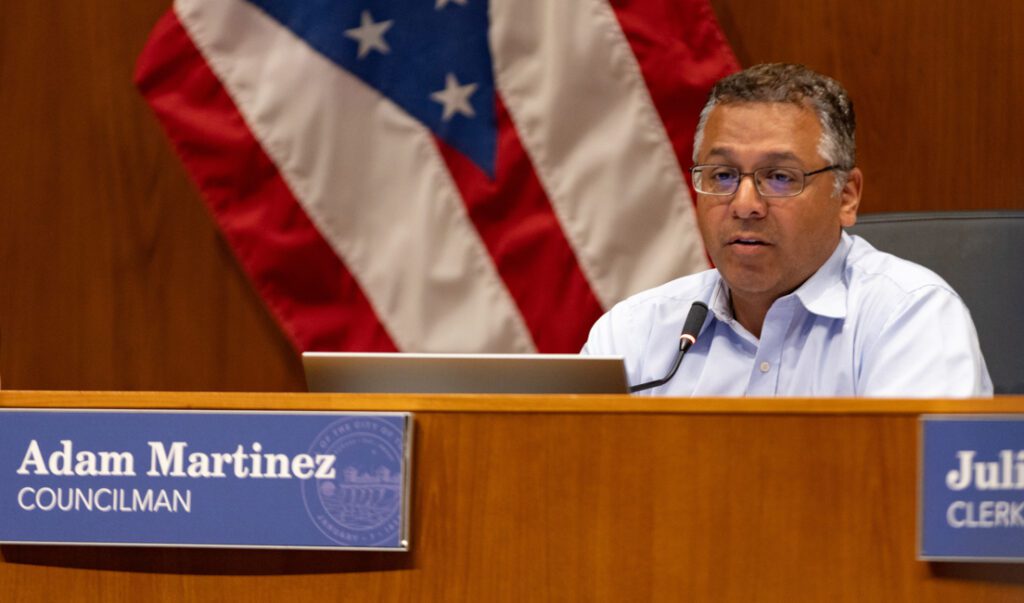
Generally, the agenda review looks at mundane parts of government and asks questions of department heads so they have more information before voting on them in meetings.
As such, a full quorum was not present at the beginning of the review, but council members trickled into the meeting. Theresa Gadus (District 3), Wade Kapszukiewicz, the mayor of Toledo, and Brittany Jones (At-Large) were the only absent government officials from the council’s semi-circle.
Most of the review involved questions like George Sarantou (At-Large) had concerning fire hydrants.
“If you would indulge me,” he said, “I do have a question on the hydrants. How often are they painted?”
Sarantou thought the hydrants were painted every two years, but the Hydrant Replacement Program (02TMP-11415) clarified that fire hydrants are repainted every five years.
This and many other day-to-day agenda items made up the bulk of Toledo City Council’s session, but then, towards the end of the review, Torres approached the podium in front of the council with a petition from residents of District 1.
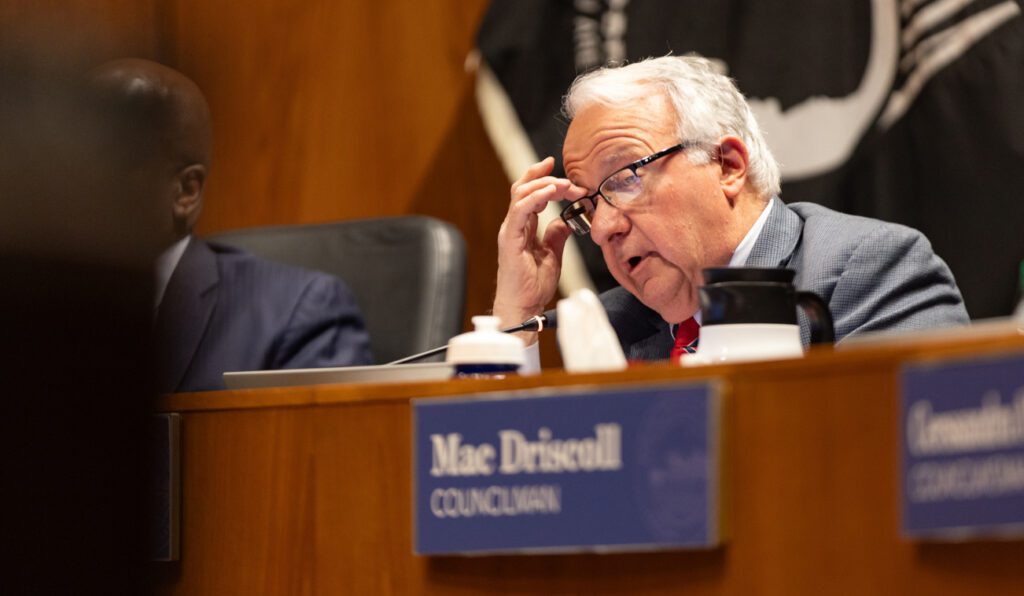
The signatures were collected in reaction to ordinances 223-25, 224-25 and 225-25, which would rezone areas respectively around 4004 Angola Rd., 0 South Byrne Rd. and 3920 Angola Rd.
The rezoning in those three areas would allow Rocky Ridge Development LLC, a company that mines lime for use in agriculture, to mine in areas close to residential zoning.
Martinez slammed the gavel and told Torres the council had not recognized him.
Then Martinez handed the floor over to council member John Hobbs III (District 1), whose district was being rezoned and who had recommended the area for re-zoning, for comment.
Calmly and evenly, Hobbs addressed the opposition to the three ordinances. “The owner of the motorcycle shop had come in and stated that he was not in support of this before, but in our last hearing he now is supporting this. So, I’m asking that we do not go through this again. Everyone has had an opportunity …” was all Hobbs could get out before Torres interjected.
“I have 303 signatures of residents …”
A swift gavel smash from Martinez interrupted Torres, but Torres continued speaking. As Torres was escorted out of the council chambers, Hobbs calmly continued.
“My next statement was going to be I do not want this floor to be used for political grandstanding of anyone that is a mayorial [sic] candidate.”
Torres corrected Hobbs on his way out, saying he was a “concerned citizen.”
Council then began discussing Senate Bill 36 before taking a break for an executive session to discuss staffing, while Torres, Toledo City Council candidate Blair Johnson and an affected Toledoan Bill Hoag, were outside council chambers discussing the rezoning ordinances with other media.
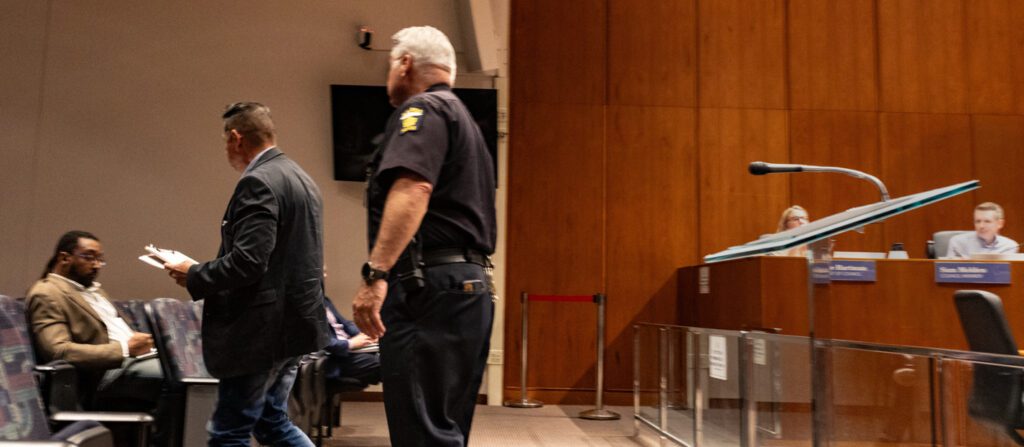
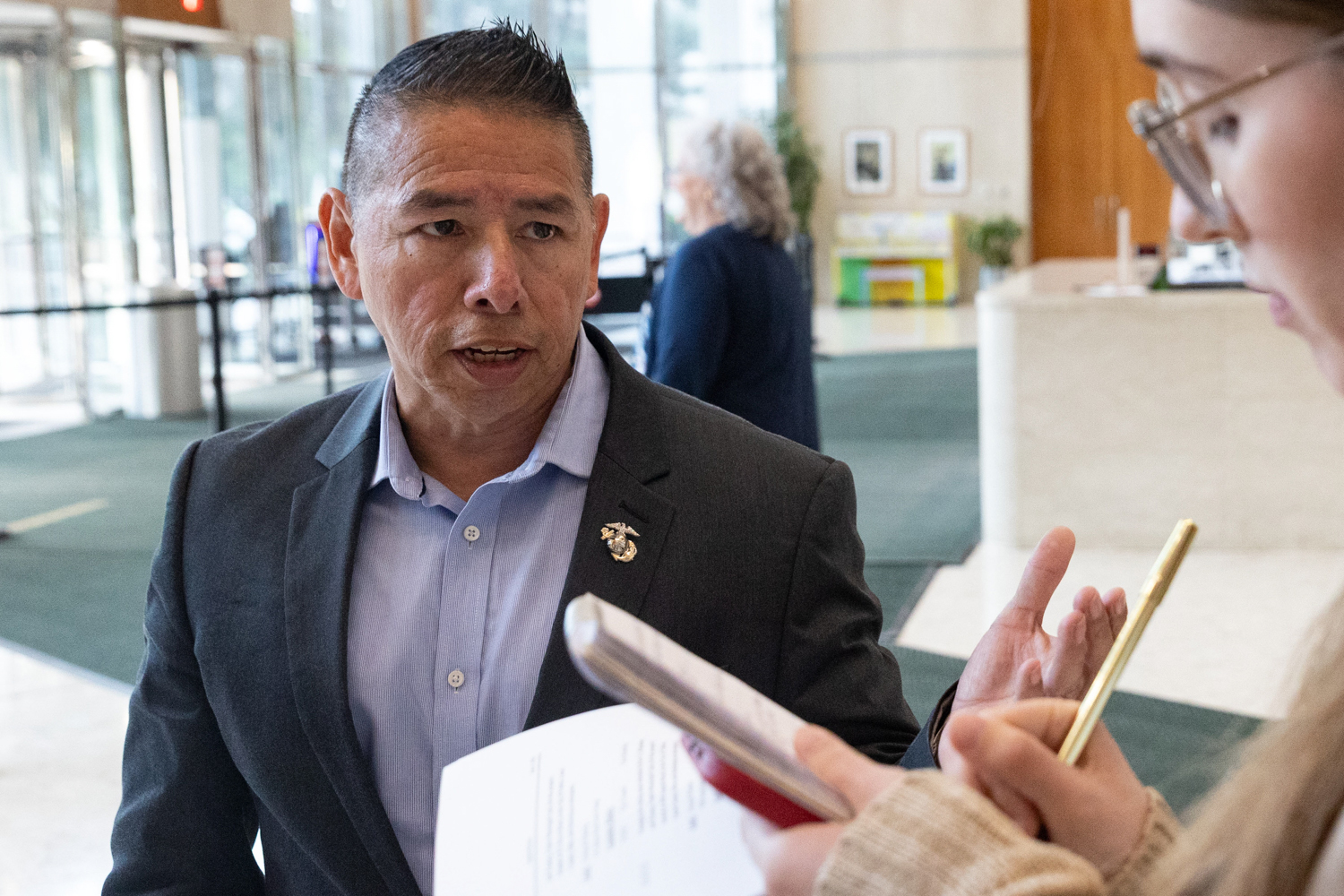

“I grew up in that neighborhood,” Hoag said in the lobby, and shared that he owns a number of houses in that area. Hoag said the rezoning and pollution from the mining was a “definite concern,” and that many of the residents in the area “had no idea what’s going on out there.”
According to Hoag, the hearings on the matter, which took place earlier in May, were inaccessible to residents and provided too little time for residents to give feedback. “My recommendation would be that they go out there…and they’ve gone out there to the Angola-Byrne corridor, but not at the convenience of the residents.”

After a little more than a day, Hoag said he was able to muster around 200 signatures against the zoning change.
Johnson then weighed in. “Toledo is looking to go green…we’re looking to plant more trees. Why are we looking to plant pollution?”
Torres, Johnson and Hoag said they were going to present the signatures at Toledo City Council’s offices. All three ordinances are on the agenda for the June 3 city council meeting.
Hobbs declined to comment any more than he already had.
> Before the Torres/City Council standoff at the agenda review, Council went into extensive questioning about the future and programming of the Chester J. Zablocki Center, a senior and community center on 3015 LaGrange Street, as they reviewed a possible $150,000 feasibility study.
“With the support of the Area Office on Aging, they have elected to move over to the new Wayman Palmer YMCA. With that move, they will be serving their existing clients, and the hope is to pick up and serve additional seniors that are in the new Wayman Palmer market,” said Rosalyn Clemens, director of the Department of Housing & Community Development.
Multiple council members noted that about $1 million in American Rescue Plan Act (ARPA) dollars had been put into revitalizing the Zablocki Center, and that they hoped it could continue to be put back into full use soon.
Clemens assured council members that was part of the plan, but for the time being some programming would be moved to the new YMCA.
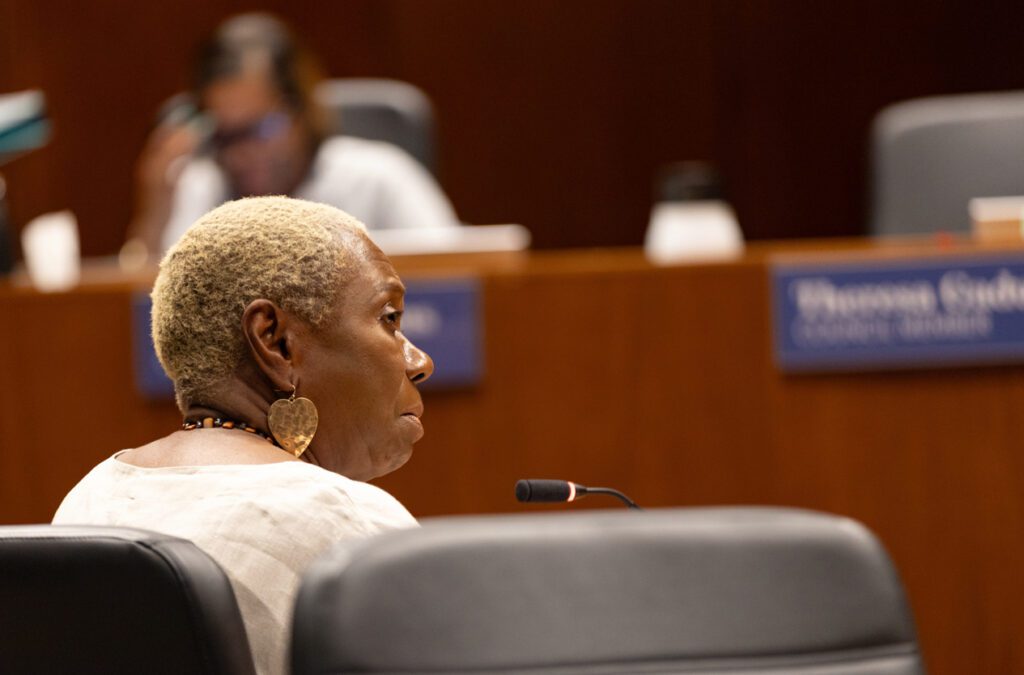
> $14,700 was proposed to replace stolen golf carts at Ottawa and Collins Parks. Council Member Sam Melden (District 5) explained a new solution to the theft of golf carts from the Golf Commission. “They [the Golf Commission] brought up the notion of a GPS software that created a geo fence area where the carts, once they hit that boundary, were shut down.”
Unsure of how expensive that kind of software would be, Melden proposed that a financial analysis should be done to see if the cost of the software would be less than the cost of replacing the carts.
Theresa Morris (District 6) agreed with the Golf Commission’s solution. “Any kind of a GPS, because this is ridiculous. I mean, it seems like this happens a lot, and again these are taken. These aren’t lost. These are maliciously taken, so I think it’s important that we do have legal surveillance. Or that we do have some sort of a security system in place.”
Republican Ohio Supreme Court justice challenges lone Democrat
This story was originally published by Signal Statewide. Sign up for free newsletters at SignalOhio.org/StateSignals. Statewide is a media partner of the Toledo Free Press.
By Andrew Tobias | Signal Statewide
One of the Republican justices on the Ohio Supreme Court is running to defeat one of his colleagues and the state’s lone remaining statewide elected Democrat.
Justice Pat Fisher confirmed Wednesday that he’s running for Justice Jennifer Brunner’s seat next year.
“Ohioans deserve a Justice who will fight for conservative values, respect the Constitution and not legislate from the bench,” he said in a statement first released to Signal. “I have a record of this and look forward to once again earning the support of the Ohio Republican Party and all Ohioans.”
Fisher, 67, currently occupies a term that expires in 2028. But he’ll be too old by then to run for reelection under Ohio’s constitutional age limits for judges. Winning next year will allow him to remain on the court for an extra four years. Fisher was first elected to the Supreme Court in November 2016. Word about Fisher’s interest in the seat got out earlier this year not long after he informed Brunner of his plans.
Brunner seat draws plenty of Republican interest
Fisher also announced his plans to seek the endorsement of the Ohio Republican Party. The state party endorsement typically carries extra weight in judicial races since voters often know very little about the candidates, who are limited by judicial ethics rules in what they can say.
Fisher is joining a crowded field of candidates who already have started campaigning: Rocky River Municipal Court Judge Joseph Burke, Fifth District Court of Appeals Judge Andrew King, Second District Court of Appeals Judge Ron Lewis and ex-Franklin County Common Pleas Judge Colleen O’Donnell.
None of the current justices or candidates are from Northwest Ohio.
The volume of candidates show Republicans’ confidence that Brunner’s seat could be up for the taking. Democrats hit a modern high-water mark when Brunner was elected in 2020, giving the party three of the court’s seven seats. But since Republican state lawmakers changed state election rules to add party labels to the ballot for Supreme Court candidates in 2021, Republicans have won every Supreme Court race by an average of 11 percentage points.
More about the Ohio Supreme Court
Today, Republicans hold six of the Ohio Supreme Court’s seven seats. The court is the state’s highest appeals court, issuing the final word on criminal and civil cases when lower courts disagree. Many of these cases deal with charged political issues, including interpreting the abortion-rights amendment voters added to the state constitution in 2023. Some of them are more mundane and deal with business liability issues, which explains why business interests and trial lawyers often fund candidates of their choice.
The Supreme Court also is the main court to handle certain issues, including elections related cases like redistricting challenges and disputes over state ballot issues.
Ohio’s constitution sets what amounts to a mandatory retirement age for judges. Candidates who will be older than 70 when their term begins aren’t eligible to run.
At judges’ request, state lawmakers placed a measure on the ballot in 2011 that would raise the age limit to 75. Voters defeated it 62 to 38 percent.
Signal Statewide is a nonprofit news organization covering government, education, health, economy and public safety.
Coffee Quest 419: Connects coffee lovers one cup at a time
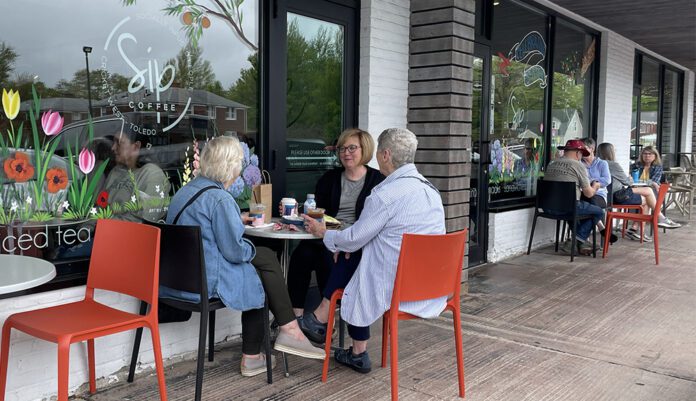
Every spring, coffee lovers in the Glass City take part in Coffee Quest 419, a community-wide adventure that encourages people to shop at locally owned coffee shops and potentially win prizes along the way.
Some of the long-standing coffee shops – Black Kite Coffee, Maddie & Bella and The Flying Joe – kicked off the campaign before Destination Toledo began managing the event in 2024. The event originally began in 2018 as a program run by local coffee shops.
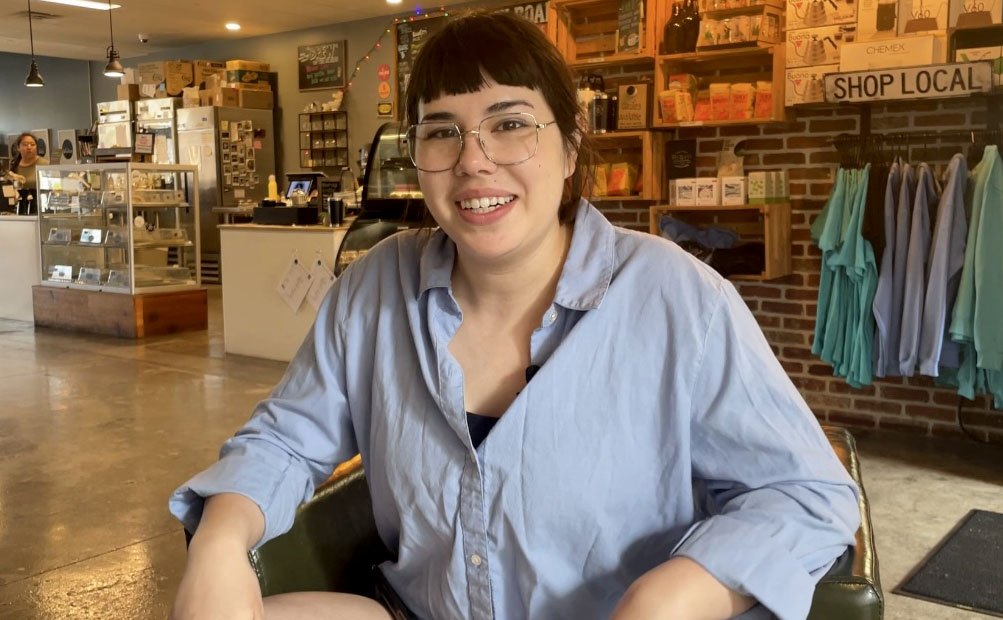
“I believe Jen, the owner, was one of the first ones to help create it,” noted Josie Kennedy, manager of Brew Coffee Bar, a specialty coffee shop near the campus of UToledo that serves Zingerman’s coffee and espresso, as well as baked goods from area bakers.
This year, 28 shops are participating in the challenge to engage in the community, promote their businesses and foster local pride. The Quest now features an online passport to keep track of visits.
“It’s definitely been beneficial,” said Jamie Stiriz, owner of Casual Grounds Coffee, a Sylvania coffee shop that even has a selfie wall. “It helps marketing for us—we’re kind of like a hidden gem.”
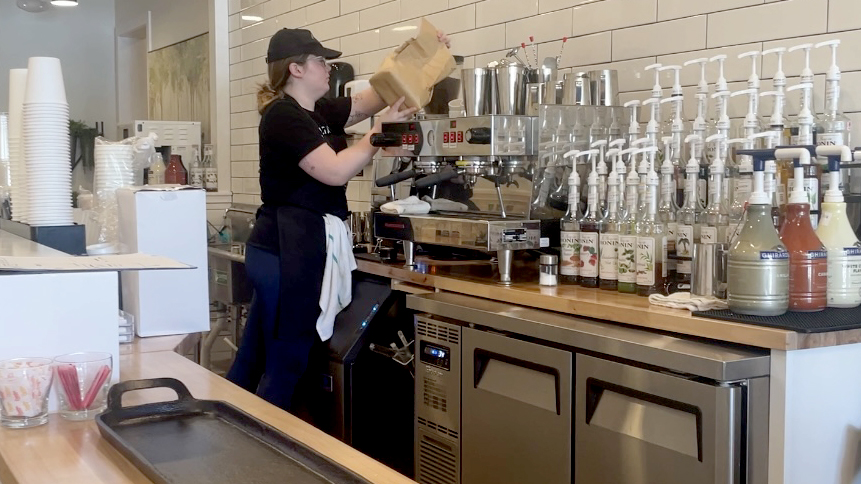
For Black Kite manager Emerson Dupont, he said the challenge helps significantly increase foot traffic and increase engagement during slow seasons at the independent shop in the Old West End.
“We definitely saw more people return as customers that we hadn’t seen prior to Coffee Quest,” said Dupont.
Caleigh Heuring, director of marketing communications at Destination Toledo, said that while there has been an increase in customers and engagement, economic gains have also resulted from the Quest.
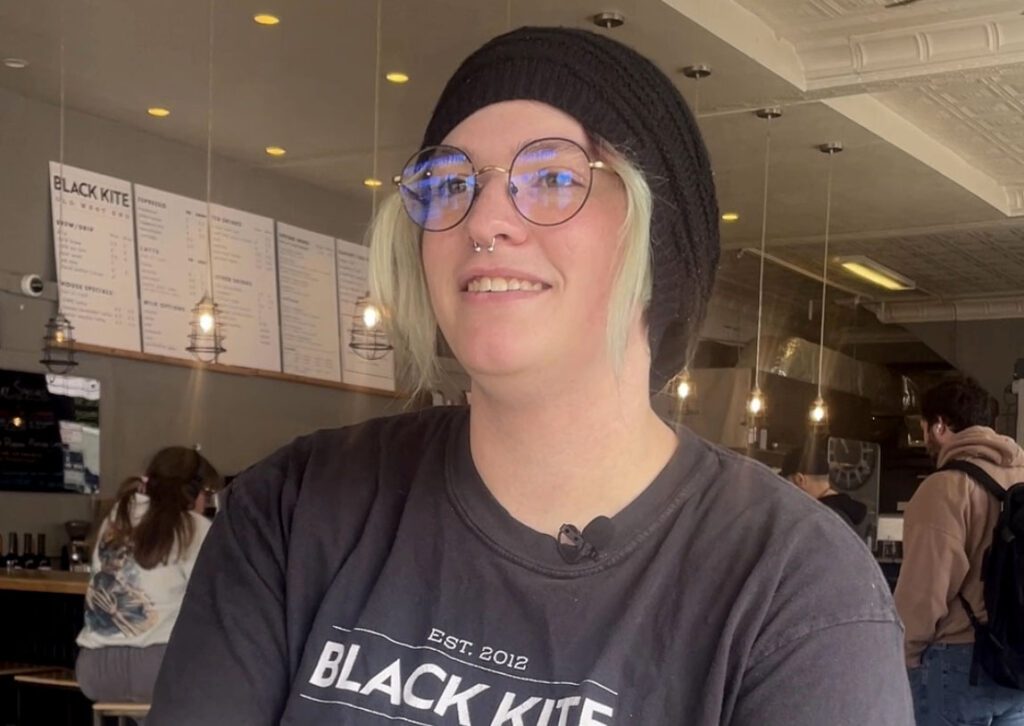
“Last year’s results showed more than $222,000 in economic activity that we could attribute to Coffee Quest. We were able to see that 17 percent of the participants were from outside the Toledo region, which was surprising to us.”
For Stiriz, the quest has significantly affected her business sales, with total sales nearly doubling from February to March. In February, total items sold were 1,430. In March, sales increased to about 2,215, and April saw approximately 2,641, according to operational manager Kylee McBride.
“It’s really fun to keep track of the number of people coming in through Coffee Quest,” Stiriz said. “We have our own data in our system that we’re tracking.”
In March and April alone, Casual Grounds Coffee has seen more than 422 Coffee Quest participants.
A common theme among local coffee shop employees is their enthusiasm for meeting new faces through the challenge.
“It definitely gives us a cool opportunity to meet people who are a little bit further out, just because this goes all the way to Wauseon and Bowling Green,” Kennedy said. “People who live there suddenly start coming here because they’ve heard about it, which is really cool.”
The challenge provides mutual benefits for businesses and customers, alike. Participants can win prizes, discover new spots and spend time with friends and family.


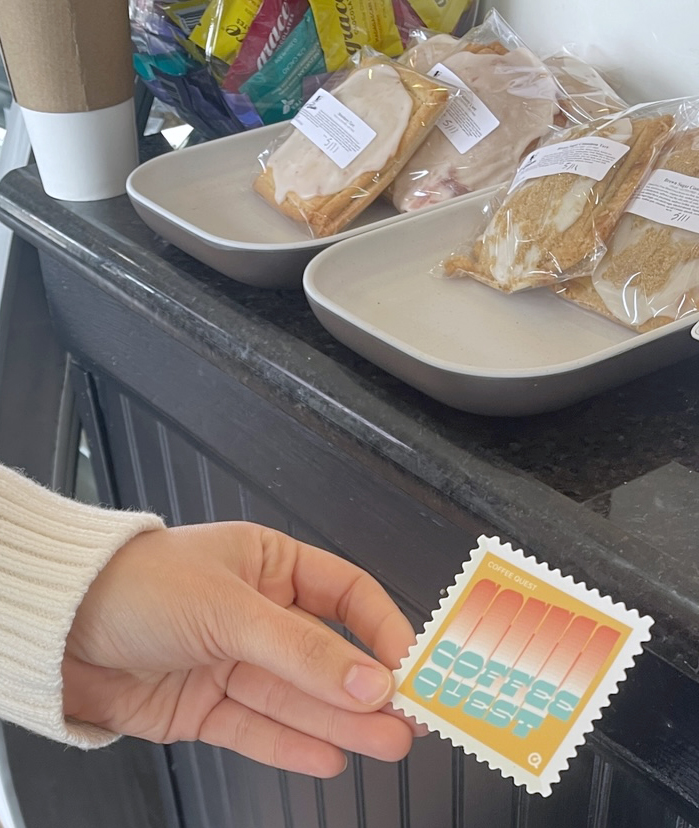
“I started the challenge with my dad,” said participant Heather Schramm. “It’s just one of the things we bond over.”
Schramm has participated in the challenge since its conception, with a short break during the COVID-19 pandemic.
“It’s an adventure—you mark all the coffee shops off your list.”
To Schramm, the Coffee Quest Challenge is more than just a cup of joe.
Coffee is so much more than just the drink, right? It’s spending time with people. It’s getting to know them.
Heather Schramm
For Stephanie Hinz, a recent participant since 2024, the event offers a date-night opportunity for her and her husband to spend time together—through coffee.
“I believe I visited 19 shops last fall,” Hinz said. “I really enjoyed every stop! I love getting Americanos or cappuccinos because they showcase the quality and taste of the coffee.”
A motivating factor for Hinz is the exploration of new shops and the enjoyment of delicious coffee.
“I would recommend this experience to any coffee lover in the 419 area. It’s so much fun and a great way to support our community.”
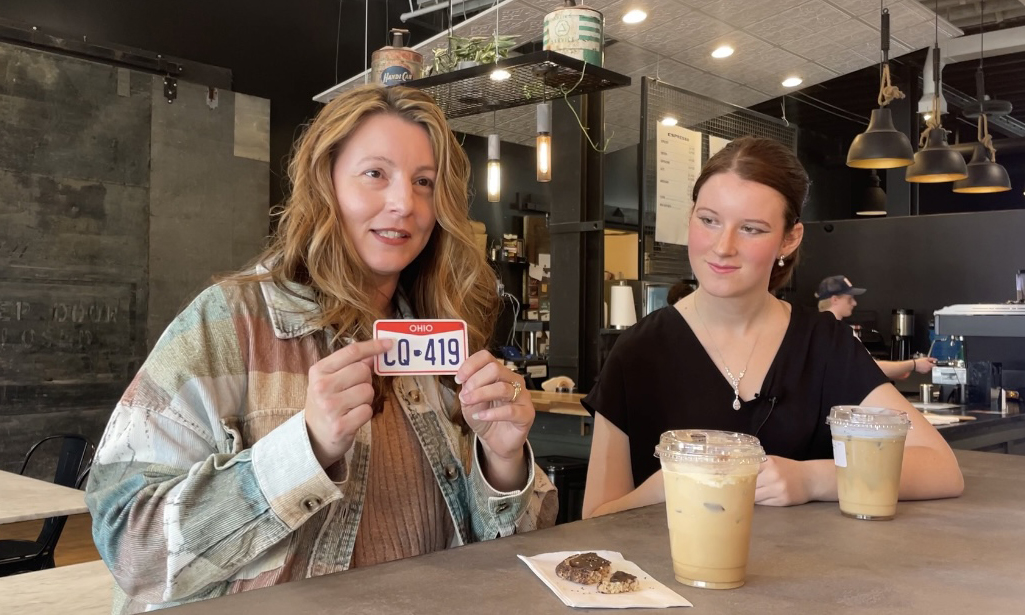
Similar to Schramm and Hinz, mother and daughter Jocelyn and Jennifer Huber use the challenge as an opportunity to spend time together.
“That’s our kind of memory—going into all the places, enjoying the time and creating little memories along the way,” Jennifer Huber said.
Jocelyn Huber said her mom encouraged her to join the quest and try different coffee spots.
“She was like, ‘Hey Jocelyn, do you want to do this Coffee Quest?’” Jocelyn recalled. “I was like, ‘Yeah, let’s do that.’ So we did that last year, and we’re doing it again this year because we enjoy it so much.”
The Hubers said the challenge opens the door for new experiences and exciting activities.
“We like to try new things, venture out and explore new places,” Jennifer Huber said. “We like coffee so it was the perfect combination. And then it was like, ‘Oh, well, you can get this T-shirt. Why don’t we go for that?’ So that was an added bonus, I guess you could say.”
The Hubers began their journey with Coffee Quest a couple of years ago, before the physical passport became digital.
“I could tell you the improvements that have been made with the app—it’s been really nice,” Jennifer Huber said. “It has a map and location features. You can get access to everything.”
To learn more and take part in the challenge, participants can search “Coffee Quest 419” online and click “Sign Up.”


Participants who visit three shops receive a sticker. After visiting 13 shops, they can win a themed keychain. To win a T-shirt, participants must visit 23 shops. To enter the grand prize raffle, participants must visit all 28 shops.
Contestants have until June 15 to join in on the fun. Heuring said Destination Toledo has no plans to stop the annual tradition as long as it continues to positively impact the community and local businesses.
Glass City Live fills UToledo’s Glass Bowl with country music
TOLEDO – Over 20,000 fans gathered in the Glass Bowl at the University of Toledo on Saturday, May 24, to hear Zac Brown Band, Dustin Lynch, Luke Grimes and Gaelic Storm perform at Glass City Live. It was the first concert at the Glass Bowl since July 1, 1994, when the Beach Boys and America performed.
Before the show, fans enjoyed grilling, tailgating and playing corn hole. Food trucks lined up by the end zone opposite the Larimer Athletic Complex, while The Stubborn Brother Pizza Bar set up shop on the field.

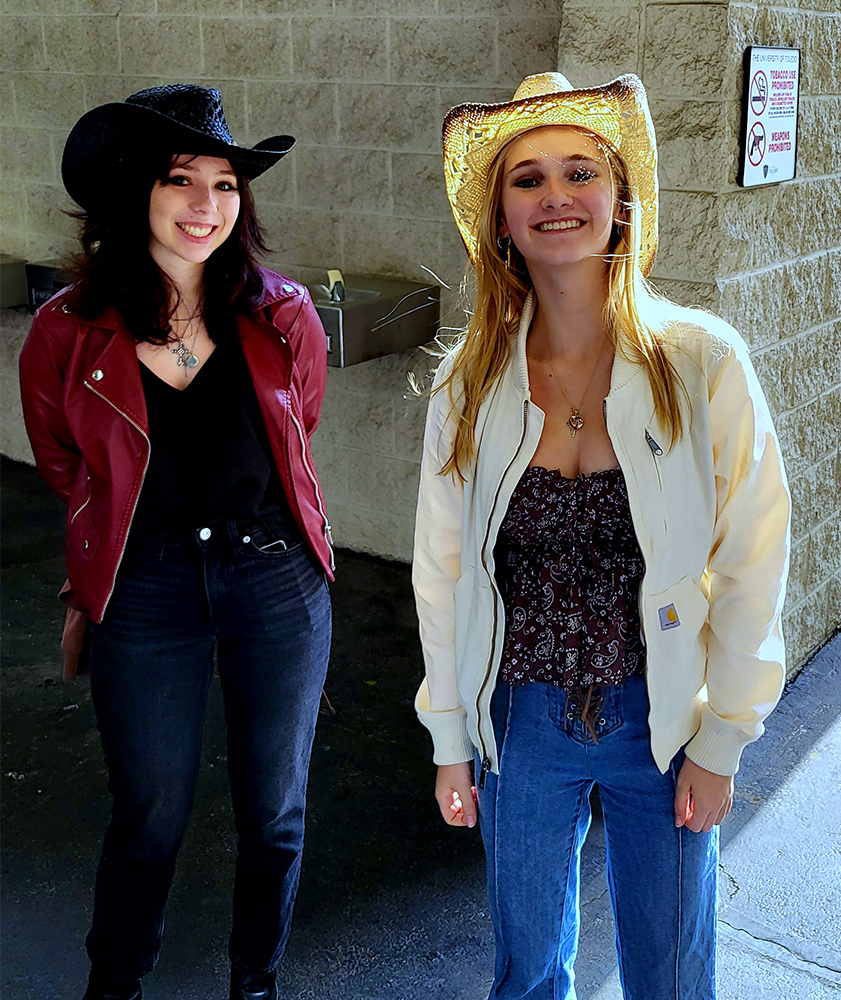
Lydia Fairchild, from Maumee, was one of the fans eagerly waiting for the show to start. Recently, she became a fan of the Zac Brown Band after friends in college eventually persuaded her to give country music a chance. Her favorite song? “Chicken Fried.”
“I love live music. It’s just a different way of feeling,” she said. “You can feel it here. It changes the energy of music, too. Once you listen to something live, you love it more.”
Fairchild highlighted the positives the concert provided, like the money it brought into the university and for local businesses, like the food trucks on site.
“I see El Viejon over there. They’ve been outside of my family’s business (Meredith Party Rentals) every single day for the past 10 years, and they make some really good food; they deserve it, and they deserve the business, just like bringing attention to our local businesses and just how cool our city is. I’m sure a lot of people came from far away [to attend].”
She said she would love to see “pop princesses” in the future, like Sabrina Carpenter or Chappell Roan, perform at the Glass Bowl.


Gaelic Storm kicked off the show to awaken the guests settling into their seats. They performed hits like “Johnny Tarr” and “Johnny Jump Up.”
Luke Grimes followed their set and performed fan favorites like “Burn” and “No Horse to Ride.”
Bryant Koback, a former running back for the University of Toledo, who is now with the Seattle Seahawks, was one of the fans waiting for Dustin Lynch to take the stage.
“It’s good that they bring something back here at the Glass City, at the University of Toledo,” he said. “It’s been a long time since they played something in the Glass Bowl; it’s cool, a great environment.”
According to Koback, the Glass Bowl is equipped for the event because of its design. The sound echoes upward toward people sitting high up in the stands. He said the only thing he would change about the setup is making all seats available (several seats were blocked off because of the stage). According to Koback, no matter who performs here, it will draw a crowd.
“Anytime anything’s going on here, you’re gonna have a crowd. The City of Toledo is so diverse, it doesn’t really matter. You’re gonna have a crowd; it’s gonna be packed.”
Dustin Lynch went up third and gave a powerful performance as the sun started to set on the Glass Bowl. He performed for an hour as the fans continued to pour in. When he left the stage, everyone knew it was finally time for the main event.


Finally, the moment came for Zac Brown Band to take the stage. The crowd remained lively, and the music stayed loud for the duration of the set. Because it was finally dark, the band could give a full light show that they delivered for their fans, performing hits like “Toes,” “Colder Weather” and “Chicken Fried.”
He even played a cover of “The Devil Went Down to Georgia” by Charlie Daniels and “Bohemian Rhapsody” by Queen.
David Madigan, from Perrysburg, was one of the thousands in attendance. He said he enjoyed the show and agreed with Fairchild that “Chicken Fried” is a stand-out in the Zac Brown Band catalog.
Madigan said he would love to see more performers at the Glass Bowl in the future, and would love to see other genres represented. He named Mötley Crüe as a band he would love to see live in the Glass City. He said live music is important because it takes away stress and brings people together.
“It’s how people forget about what’s going on around them, and it’s a good night out.”
As mentioned in our preview story, Glass City Live is intended to be an annual event, depending on the success of Saturday night’s show.



